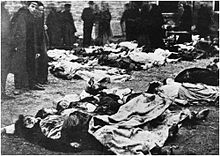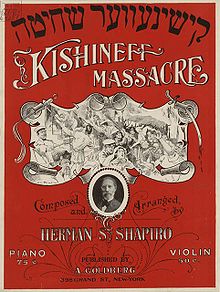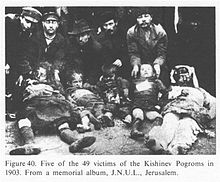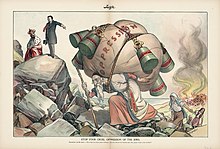Kishinev pogrom
Anti-Jewish attack in Kishinev, Russian Empire (19–21 April 1903)The Kishinev pogrom or Kishinev massacre was an anti-Jewish riot that took place in Kishinev, then the capital of the Bessarabia Governorate in the Russian Empire, on 19–21 April [O.S. 6–8 April] 1903. During the pogrom, which began on Easter Day, 49 Jews were killed, 92 were gravely injured, a number of Jewish women were raped, over 500 were lightly injured and 1,500 homes were damaged. American Jews began large-scale organized financial help, and assisted in emigration. The incident focused worldwide attention on the persecution of Jews within the Russian Empire, and led Theodor Herzl to propose the Uganda Scheme as a temporary refuge for the Jews.
Read article
Top Questions
AI generatedMore questions
Nearby Places

Sectorul Buiucani
Administrative Sector

Ion Creangă State Pedagogical University of Chișinău

Technical University of Moldova

National Museum of Fine Arts, Chișinău
Art museum in August Street, Chişinău

Transfiguration Church, Chișinău
Church in Chișinău, Moldova
List of ambassadors of China to Moldova
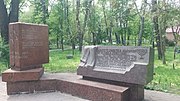
Victims of Chișinău Pogrom
Memorial to the victims of Chișinău pogrom

FMF Beach Soccer Arena
Beach soccer arena in Moldova.
